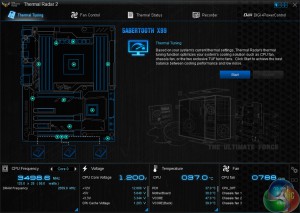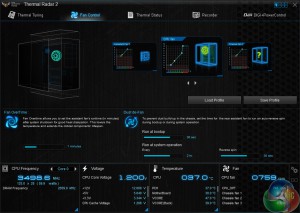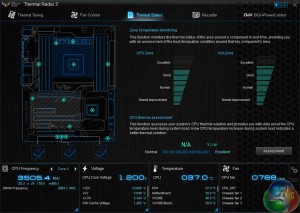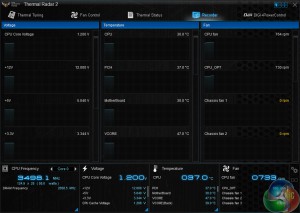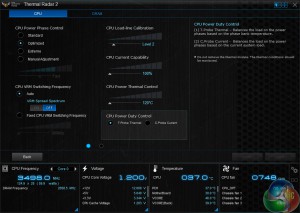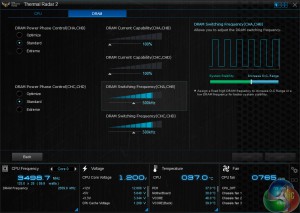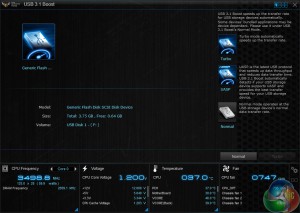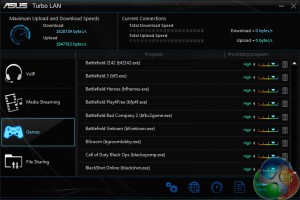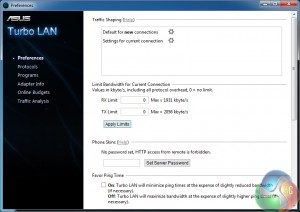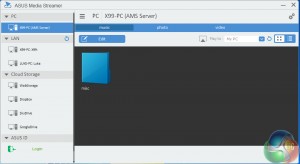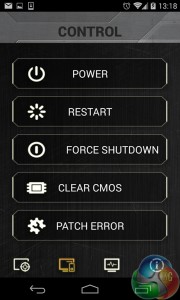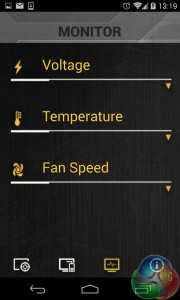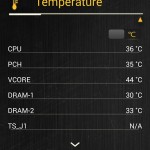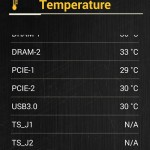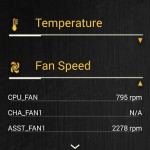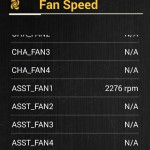Thermal Radar 2 is a section in Asus' AI Suite 3 software that gives users control over their system parameters.
Settings relating to the motherboard's thermal performance, fan speeds, and power configurations can be adjusted and monitored.
The extensive fan control section gives users an almost identical level of customisation as the UEFI Q-Fan tool. From here, profiles can be set and tweaked.
There's also a thermal assessment tool that analyses your CPU cooler's thermal performance in °C/W. Asus displays the numerical value for how the temperature rises with respect to CPU power usage, however a graphical form would be far more elegant and interpretable for the user.
Voltage levels, component temperatures, and fan speeds can be monitored in a graphical fashion. This is good for monitoring voltage levels when stability testing an overclock.
There is limited control over the CPU and DRAM's power-related operations in the Digi+ Power Control section.
Asus' USB 3.1 Boost tool can be used to activate different speed modes for connected USB drives. This is especially useful for enabling higher-speed operation of connected drives when using Windows 7 (which doesn't have the same level of USB 3.0 speed support as Windows 8.x)
Focusing on the USB 3.0 element of USB 3.1 Boost, the tool is Asus’ way of enabling the speed-increasing UASP mode for USB devices connected to a Windows 7 system. Since ASRock dropped its UASP-activating software (XFast USB) back with Z97′s introduction, Asus’ USB 3.1 Boost tool is the only way of pushing past 400MBps with a USB 3.0 device connected to a Windows 7 system.
Turbo LAN is similar to Killer’s Network Manager software in the way that it can control network bandwidth priorities.
The software tool is one of the primary reasons that Asus continually relies upon Intel NICs rather than the Killer E2200 series alternative, even for its gaming motherboards.
Asus’ Media Streamer software can, as suggested by the name, stream media between systems connected to one’s network.
TUF Detective Mobile App
The TUF Detective app worked perfectly on my Nexus 4 phone running Android 4.4.4. A user can control their system, view its information, and make use of monitoring tools through the app.
Voltage, temperature, and fan speed monitoring is given its own section in the app. Each of the sections features a clickable arrow that opens up additional information.
The temperature and voltage level monitoring information was taken straight from information supplied by the TUF ICe and Nuvoton chipsets. Information displayed on the app is consistent with that shown by OS-based software.
I think a worthwhile upgrade for the app may be to give it basic fan speed control abilities. That said, Asus deserves credit for creating a unique tool that provides a wealth of information about a system.
I am particularly fond of the tool's monitoring abilities – users with a single display can play their game while also checking system information on a tablet's screen.
 KitGuru KitGuru.net – Tech News | Hardware News | Hardware Reviews | IOS | Mobile | Gaming | Graphics Cards
KitGuru KitGuru.net – Tech News | Hardware News | Hardware Reviews | IOS | Mobile | Gaming | Graphics Cards


